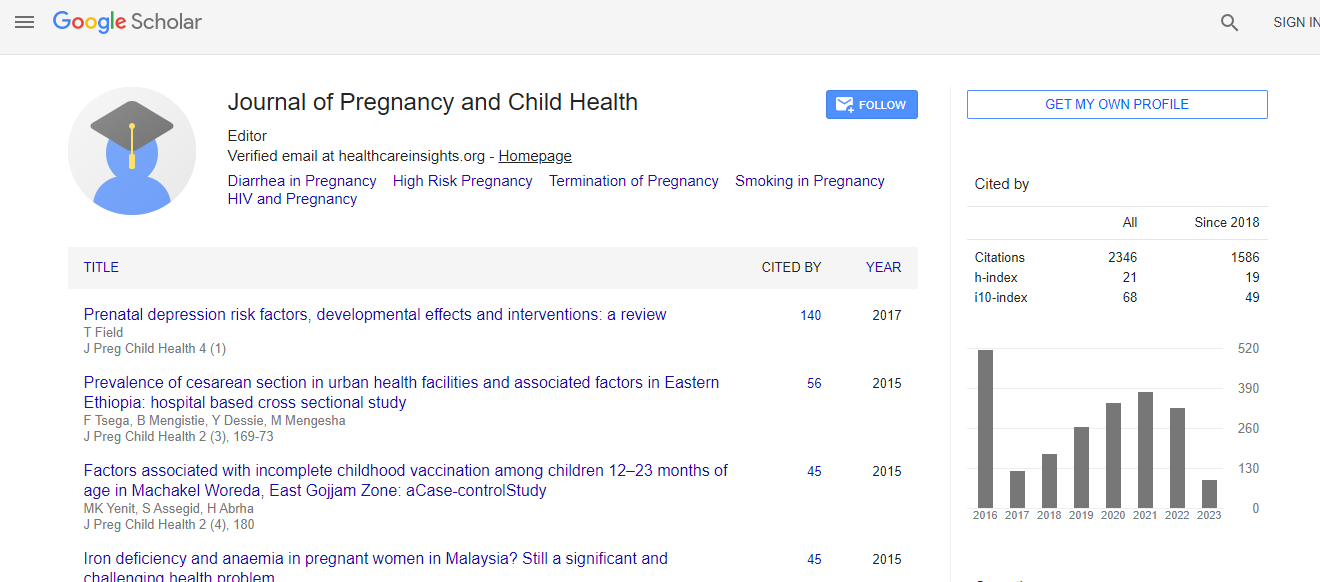Research Article
Maternal Demographic and Placental Risk Factors in Term Low Birth Weight in Ghana
Aleksenko Larysa1,2, Tettey Yao2, Gyasi Richard2, Obed Samuel3, Farnell Damian Joseph John4 and Quaye Isaac Kweku5*1University of Namibia, School of Medicine, Department of Pathology, Windhoek, Namibia
2Department of Pathology, Faculty of Health Science, School of Biomedical and Allied Health Sciences, University of Ghana, Accra, Ghana
3Department of Obstetrics and Gynaecology, Faculty of Health Science, School of Biomedical and Allied Health Sciences, University of Ghana, Accra, Ghana
4School of Dentistry, Cardiff University, Cardiff CF14 4XY, United Kingdom
5University of Namibia School of Medicine, Department of Biochemistry and Microbiology, Windhoek, Namibia
- *Corresponding Author:
- Isaac K Quaye
Department of Biochemistry and Microbiology
University of Namibia, School of Medicine
P/Bag 13301, Windhoek, Namibia
Tel: 264612065044
E-mail: dr.quaye@gmail.com
Received date: May 11, 2017; Accepted date: May 14, 2017; Published date: May 19, 2017
Citation:Larysa A, Yao T, Richard G, Samuel O, John FDJ, et al. (2017) Maternal Demographic and Placental Risk Factors in Term Low Birth Weight in Ghana. J Preg Child Health 4:325. doi:10.4172/2376-127X.1000325
Copyright: ©2017 Larysa A, et al. This is an open-access article distributed under the terms of the Creative Commons Attribution License, which permits unrestricted use, distribution and reproduction in any medium, provided the original author and source are credited.
Abstract
Background: Several studies report on factors that associate preterm birth and intrauterine growth restriction with low birth weight (LBW). However, few studies discuss risk factors that associate with LBW for full-term births. No such studies exist that involve a population from Ghana. Method: We used a nested case-control study approach to examine maternal socio-demographic and placental factors that contribute significantly to term LBW in Ghana. We assessed also the incidence of LBW in general at a major teaching hospital facility in Ghana. Results: Univariate and multivariate logistic regression analysis were used to investigate maternal sociodemographic and placental factors that associate with LBW. Following the preliminary univariate analysis, a stepwise logistic regression analysis showed that unstable income source, single motherhood, combined effect of pre-eclampsia and anaemia; ORs of 5.366 (95% CI: 1.986 to 14.497), 21.390 (95% CI: 3.610 to 126.734) and 3.246 (95% CI: 1.074 to 9.814), respectively, and placental weight and irregular insertion of the umbilical cord (variables scaled by a factor of 10-2 to aid interpretation) ORs 0.28 (95% CI: 0.115 to 0.683), 0.010 (95% CI: 0.001 to 0.173 respectively) on the chorionic plate, were risk factors for LBW. The socio-demographic and placental factors reveal a core role of maternal and infant nutritional deficiencies in term LBW in Ghana. The general prevalence of LBW in the Hospital facility was 6.2%. Conclusion: We conclude that poor maternal and infant nutrient supply is key factors in term LBW in Ghana. These factors are amenable to appropriate nutritional and educational interventions.

 Spanish
Spanish  Chinese
Chinese  Russian
Russian  German
German  French
French  Japanese
Japanese  Portuguese
Portuguese  Hindi
Hindi 
